Von Chris Grinter, on May 30th, 2010 For the rarely reoccurring quiz series, here is a new image. Who is this moth?
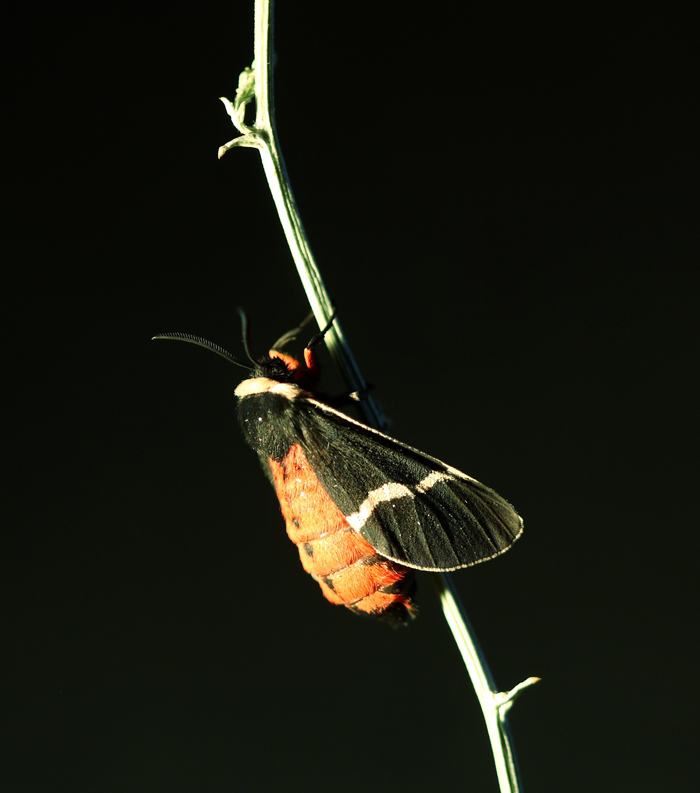
Von Chris Grinter, on May 25th, 2010 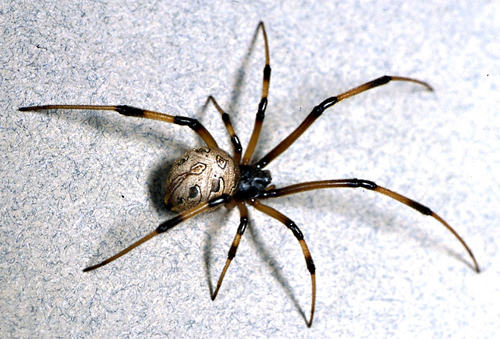
Für jene Kalifornier, die lesen, besonders die im Süden, Halten Sie Ausschau nach dieser schönen kleinen Spinne, Latrodectus Geometricus – die braune Witwe. Arachnologen an der UC Riverside überwachen die Ausbreitung dieser invasiven Art. Ironischerweise erweist es sich als nicht so gefährlich wie unsere heimische Schwarze Witwe. dennoch, es ist nicht von diesen Teilen hier (sollte in Ihrem besten südlichen Twang gesagt werden). Wenn Sie ein Exemplar finden, besonders wenn Sie nicht in LA/Orange/SD County sind, Du solltest Kontakt das Team von UCR.
Von Chris Grinter, on May 25th, 2010 With Korea teetering on the edge of a hot war, an ecological disaster of unprecedented proportion and civil unrest in Jamaica (someone harshed their mellow) – just to name a few of todays headlines from other sources – CNN takes the time to fluff up its front page.

I usually get a little excited when I come across articles like this because I always have hopes for something so ridiculous it has to be discussed. Thankfully CNN is run by teams of drunken marmosets who like to fling crap at us. Before the Skeptical Moth epoch I would share links to cover page stories on the findings of bigfoot, chupacabra and aliens with just a few friends or spread it around facebook. Now I can ridicule CNN on a google archived medium.
I just do not understand the point of this article. John Blake doesn’t discuss an explanation for this phenomenon, offer an opinion, or ask any questions. Sicher, he asks if God really cares who wins, but that question isn’t any more valid than asking if my dog (also fictional) cares what kind of car I drive (unless of course it is psychic! Ernsthaft…people believe this). When I read articles like this I feel as if I am grading papers in a high school english class. There is no journalistic integrity, intelligent opinion or factual basis for the scribbling – there are just pretty pictures and words illustrating them. Setting the whole prayer and faith issue aside; athletes have always been known for their superstitions (another). Die “acceptance speech” phenomenon undoubtedly falls under this category. After achieving a statistically small outcome (sehen hot hands), they are afraid of forgetting God in fear of magically losing their ability (not necessarily consciously). For some reason Blake restrains this article to only sports – perhaps he is intentionally playing into the massive demographic of American sports loving, bud-light swilling, christians – but clearly this is a reoccurring theme. At any awards ceremony God, Jesus or Allah is usually at the top of the thank-you list. Forget all that hard work and talent you might have, it was something or someone else. Abandoning all rational thought to a mystical being is a dangerous thing. This mindset is the same one that allows addicts to blame anyone but themselves (even if addiction is in part hard-wired), believe in faith healing, start a holy war, or let the Catholic church blame the devil.
CNN is flashing the lights and jingling the keys over the faces of their readers. Usually I leave it up to FOX news to insult my intelligence, but I am glad to know I have a choice in this market.
Von Chris Grinter, on May 24th, 2010 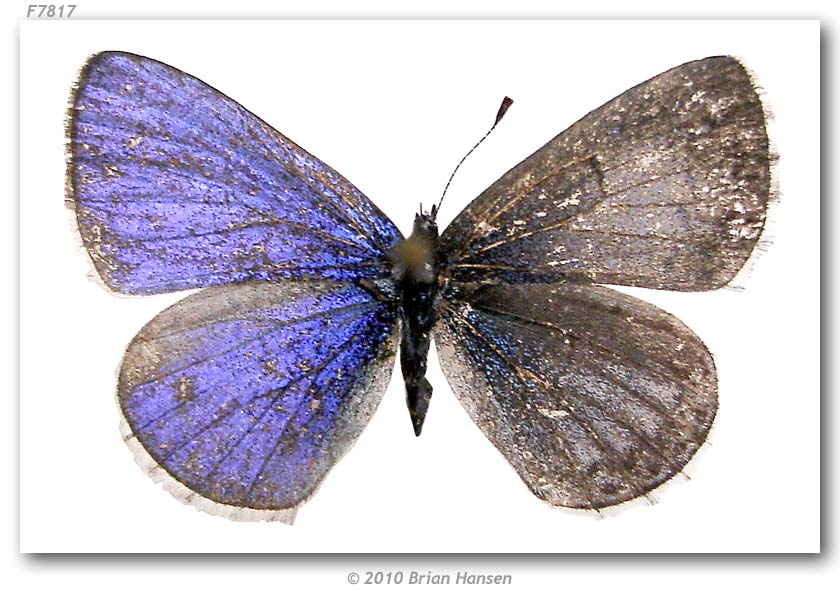
Ein einmaliges Ereignis, ein beidseitiges Gynandromorph. Kurzum, ein Fehler während der Zelldifferenzierung erzeugt asymmetrische Chromosomenmuster, was zu einem asymmetrischen Geschlechtsausdruck beim erwachsenen Insekt führt. Falls Sie nicht auf den obigen Link geklickt haben, tun Sie dies, Es ist eine ausgezeichnete Beschreibung mit einigen fantastischen Fotos.
Zurück zum Schmetterling. Ich war diesen März direkt über der mittleren Gabelung des American River im Feld auf der Jagd nach Xanthothrix, mit mir waren Brian Hansen und Bob Patterson. Bob und ich waren auf einer Mission, um einen Remote-Patch von Coreopsis hoch zu finden Serpentinenböden, und unsere seltene kleine Motte zu finden. Brian kam vorbei, um den Tag zu genießen und die Schmetterlingsfauna zu erkunden. Während Bob und ich weiterwanderten, waren wir gespannt, ob sich die Tageswanderung lohnen würde, Brian hielt häufig an, um vorbeifahrende Leps einzufangen. Es war wahrscheinlich weniger als eine Stunde vom Auto entfernt, als wir hinter uns auf dem Pfad Form hören “Hallo Leute… Ich glaube, ich habe gerade einen Gynandromorphen gefangen!!!” Ok, Ich war skeptisch. Bob und ich näherten uns und sahen Brian, der ein kleines Blau in der Hand hielt, was unverkennbar, war ein bilaterales Gynandromorph. ich wurde weggeblasen. Bob ist vorbei 50 jahrelange Erfahrung als begeisterter Lepidopterist und hat noch nie einen davon in freier Wildbahn gesehen. Um dieses Kunststück noch beeindruckender zu machen, Dieser kleine blaue Schmetterling ist im Frühjahr eines der häufigsten Insekten im amerikanischen Westen. Heute, sie tummelten sich in großer Zahl entlang des Weges, und ich hatte nicht einmal aufgehört, um eins zu blinzeln. Brian hat gerade einen Eins-zu-einer-Million-Fang erzielt. Vielleicht ist es der Fluch eines abgestumpften Lepidopteristen, der mich von einer solchen einmaligen Entdeckung abhält; aber ich weiß, dass ich sogar den gewöhnlichsten Schmetterling näher betrachten werde, wenn er an mir vorbeifliegt.
Wie Sie also sehen können, ist der Schmetterling genau halb männlich und halb weiblich (die rechte Seite ist weiblich). Wenn Sie sehr genau hinsehen, können Sie sogar eine perfekte vertikale Linie sehen, die den Körper des Insekts halbiert (sieht fast aus wie eine Photoshop-Bearbeitung), Gynandromorphismus drückt sich schließlich im ganzen Körper aus und sogar die Genitalien sind in seltsame Formen verzerrt.
Das Exemplar befindet sich in Brian Hansens persönlicher Sammlung, und Sie können die Bilder finden, die auf der gehostet werden Schmetterlinge von Amerika-Website.

Von Chris Grinter, on May 23rd, 2010 
Natürlich, it was named Phallus drewsii. This comes form the list of the top 10 species named im 2009, complied by Arizona State University (not a very good list if 7 of my new species weren’t on there…). While I tend to avoid phallic and O’Keeffesque botany, this one I couldn’t resist because it was named after someone from my own institution. Dr.. Robert Drewes now has a small phallic fungi named after him (with permission). Taxonomy humor at work.
Von Chris Grinter, on May 18th, 2010 
Has just been posted over at Käfer in der Bush. Go over and explore the latest moth carnival, a gathering of blogs that have featured moths in one way or another over the last month or so.
Von Chris Grinter, on May 18th, 2010 News in from India, a butterfly photographer has been kidnapped. A local park official who was visiting the north eastern province Arunachal Pradesh was taken at night by a gang of armed youth-rebels. Efforts to find him have been hampered by the weather and remote terrain. India has recently become one of the most difficult countries to conduct research in, and now we are all reminded of its continuing history of violence. Often it is within the remote and wild portions of a developing country that harbors both stunning biodiversity and militant dissidents. While in Ecuador my group kept an eye out for Columbian FARC rebels who may have strayed across the border; thankfully it was only a minute possibility they would be there in the first place, and nothing was seen. I think some of my most harrowing field work has been along the US-Mexican boarder states and in Mexico itself. Drug runners would rather shoot you before asking you to move out of their way, and roaming banditos were responsible for a murder of a colleagues friend in Oaxaca years ago. Not surprisingly, the lure of untapped biodiversity keeps pulling us in. Stay safe in the field!
Von Chris Grinter, on May 5th, 2010 Over a long weekend I’ll be out in the field. Stay tuned for incredible stories (no hype here…).
While I’m away enjoy the following from other excellent bloggers:
Continue reading Gone Collecting
Von Chris Grinter, on May 5th, 2010 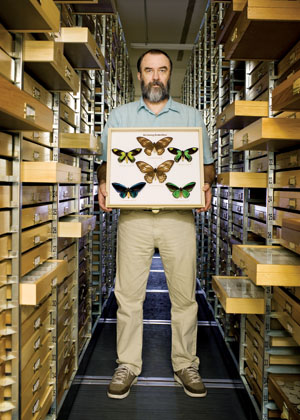 It’s good to throw a changeup every one in a while, and this week here is an article that is actually GOOD. Ja, you read it here first, ein positive article about entomology collections. We all need a breather after that Fox news fiasco with the Michigan State collection. The Honolulu Magazine does a really great job (hey… I knew that title sounded familiar… it’s a book by May Berenbaum) and they actually seem to get it. There are some great quotes from Dr. Neal Evenhuis (pictured) and Shepherd Myers; go read about the Bishop Museum’s collections and the awesomeness of being an entomologist on one of the most beautiful places in the world. Tatsächlich, Neal, need a curatorial assistant? It’s good to throw a changeup every one in a while, and this week here is an article that is actually GOOD. Ja, you read it here first, ein positive article about entomology collections. We all need a breather after that Fox news fiasco with the Michigan State collection. The Honolulu Magazine does a really great job (hey… I knew that title sounded familiar… it’s a book by May Berenbaum) and they actually seem to get it. There are some great quotes from Dr. Neal Evenhuis (pictured) and Shepherd Myers; go read about the Bishop Museum’s collections and the awesomeness of being an entomologist on one of the most beautiful places in the world. Tatsächlich, Neal, need a curatorial assistant?
Von Chris Grinter, am 4. Mai, 2010
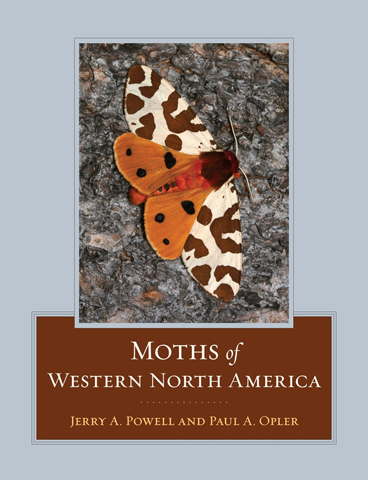
Für diejenigen, die nicht bewusst sind, ein neues Buch auf den Markt am Ende des letzten Jahres. “Die Motten der westlichen Nordamerika“, Powell und OPLER. Mit nur $95 es ist jeden Cent wert (oder $75 für die E-Book-, aber ich hasse E-Bücher). It’s a remarkable tome and the first of its kind for the western states. Not only is it a spectacular reference, but it sets the bar for all insect books. No, not every moth in the west is in there (that would break my desk and wallet at over 6,000 Spezies), but almost one of every genus and common or remarkable species has a photograph, life history and distribution. Most importantly it covers microlepidoptera. I grew up on the eastern counterpart, Moths of Eastern North America by Covell. I had two copies, one for the field and one for my desk – and had to replace the field copy at least once. It was a great book, but Powell and Opler have run laps around it.
The other good news is you can now access all 1,228 moth illustrations and corresponding data online for kostenlos. Go to CalPhotos and search for Powell, oder click here. The nice part about this is the somewhat smaller microlep photos in the book are available in high-resolution for better identification. Beautiful addition to the reference and easier than sending everyone a CD.
|
Skepsis
|









